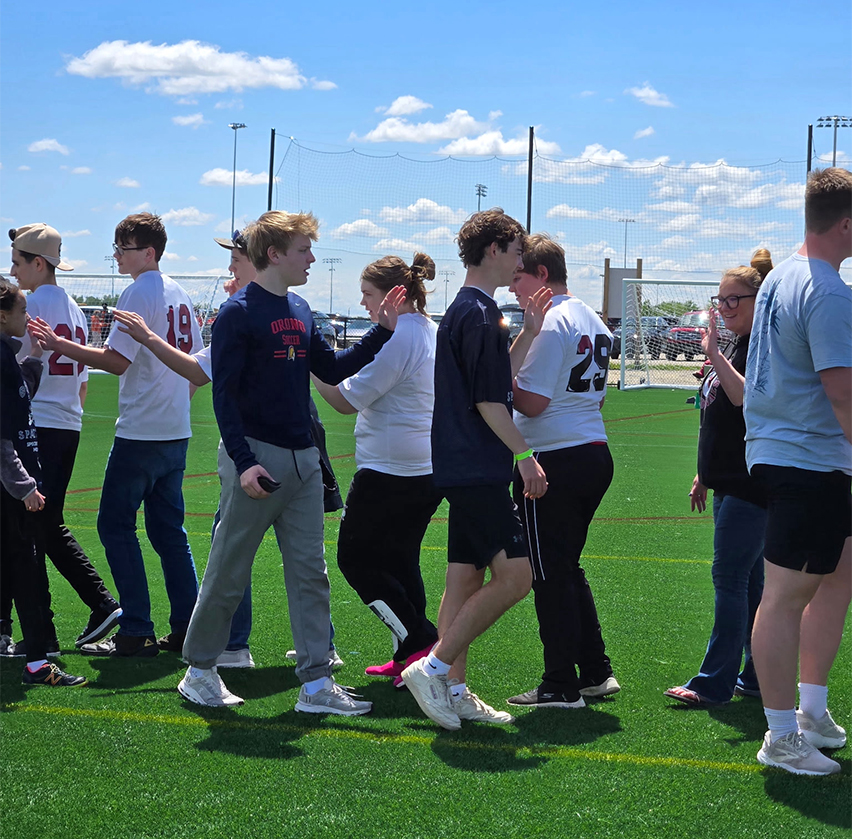Report on the ‘Schools-Parkrun’ Initiative and its Alignment with Sustainable Development Goals
1.0 Executive Summary
A new national initiative is being implemented across the United Kingdom, pairing primary schools with local Parkrun events. This report analyses the program, exemplified by the participation of Ferndale Primary School and Nursery in Swindon, and evaluates its significant contributions to several United Nations Sustainable Development Goals (SDGs). The primary objective of the scheme is to increase daily physical activity among children, addressing the finding that fewer than half of UK children achieve the recommended 60 minutes of daily exercise.
2.0 Contribution to SDG 3: Good Health and Well-being
2.1 Promoting Physical Activity
The initiative directly addresses SDG 3 by promoting healthy lifestyles and well-being for children. Key aspects include:
- Countering sedentary behaviour by providing a structured, community-based outlet for physical exercise.
- Making fitness accessible and enjoyable, thereby fostering lifelong positive health habits.
- A pilot program involving 17,000 schoolchildren has already demonstrated the scheme’s potential impact.
2.2 Fostering Community and Mental Well-being
As noted by event director Emma Sperring, Parkrun functions as a community hub, which supports the mental and social well-being aspects of SDG 3.
- Participants engage not only in physical activity but also in social interaction, meeting friends and strengthening community bonds.
- The initiative provides a positive alternative to the isolation that can be associated with excessive screen time, a concern raised by volunteer Nicola Stokes.
3.0 Advancing Social and Educational Development Goals
3.1 SDG 4: Quality Education
The program enhances the educational environment by integrating physical literacy into the school experience.
- Ferndale Primary School is launching an after-school club to prepare students, using fun games to introduce them to exercise.
- This approach aligns with SDG 4 by demonstrating that fitness is inclusive and does not require prior skill, contributing to a holistic and well-rounded education.
3.2 SDG 10: Reduced Inequalities
The initiative promotes inclusivity and equal opportunity, a core tenet of SDG 10.
- Head teacher Liz Horrobin highlighted that the program offers crucial opportunities for children who may lack private outdoor space, such as gardens.
- As Parkrun is a free event, it ensures that participation is not limited by a family’s economic status, providing equitable access to health and recreational activities.
4.0 Building Sustainable Communities and Partnerships
4.1 SDG 11: Sustainable Cities and Communities
By linking schools with existing local events, the program strengthens the community fabric and promotes the use of public spaces for health and recreation, contributing to the creation of sustainable and inclusive communities.
4.2 SDG 17: Partnerships for the Goals
The scheme is a model for SDG 17, demonstrating a successful partnership between the education sector and a community-based, non-profit organisation.
- Over 500 primary schools have formally partnered with Parkrun.
- This collaboration leverages the strengths of each partner to achieve the shared goal of improving children’s health.
- The positive reception from students, with one 11-year-old expressing enthusiasm for the involvement of all age groups, indicates the partnership’s success at the grassroots level.
Analysis of Sustainable Development Goals in the Article
1. Which SDGs are addressed or connected to the issues highlighted in the article?
- SDG 3: Good Health and Well-being: The article’s central theme is promoting physical activity among primary school children to combat sedentary lifestyles. The initiative directly addresses the health and well-being of children by encouraging them to meet the recommended 60 minutes of daily physical activity.
- SDG 4: Quality Education: The program is implemented within the educational system, involving primary schools. By promoting physical fitness and well-being, it contributes to the holistic development of students, which is an essential component of a quality education. The article mentions the school starting an “after-school club,” integrating this health initiative into the broader educational environment.
- SDG 11: Sustainable Cities and Communities: The article highlights that “Some of our children don’t even have back gardens,” pointing to inequalities in access to safe recreational spaces. The Parkrun initiative utilizes public parks, promoting access to and use of safe, inclusive, and accessible green public spaces for community health and recreation.
- SDG 17: Partnerships for the Goals: The initiative is a clear example of a partnership between different sectors of society. It involves primary schools (public sector) collaborating with Parkrun (a community-based, civil society organization) to achieve a common goal of improving children’s health.
2. What specific targets under those SDGs can be identified based on the article’s content?
- Target 3.4: By 2030, reduce by one third premature mortality from non-communicable diseases through prevention and treatment and promote mental health and well-being. The article focuses on preventative health by encouraging physical activity in children, a key measure to reduce the risk of non-communicable diseases later in life. The community aspect of Parkrun, where people “chat and meet with friends,” also contributes to promoting mental well-being.
- Target 4.7: By 2030, ensure that all learners acquire the knowledge and skills needed to promote sustainable development, including… sustainable lifestyles. The school’s plan to “show them that running, sport and fitness doesn’t have to be an exclusive club” is a form of education that promotes a healthy and active lifestyle, which is a key component of a sustainable lifestyle.
- Target 11.7: By 2030, provide universal access to safe, inclusive and accessible, green and public spaces. The program connects children, including those without private gardens, to Parkruns held in public spaces. This directly facilitates access to and utilization of these community assets for recreation and health, making them more inclusive.
- Target 17.17: Encourage and promote effective public, public-private and civil society partnerships. The scheme described, where “Primary Schools across the country are being twinned with Parkruns,” is a direct manifestation of a partnership between public institutions (schools) and a civil society organization (Parkrun) to achieve shared objectives.
3. Are there any indicators mentioned or implied in the article that can be used to measure progress towards the identified targets?
- Implied Indicator for Target 3.4: The article states that “fewer than half of children meet the chief medical officer’s recommended 60 minutes of physical activity per day.” This statistic serves as a baseline. Therefore, an implied indicator to measure progress is the percentage of children meeting the recommended 60 minutes of daily physical activity. An increase in this percentage would indicate success.
- Indicator for Target 4.7: The article mentions that “Ferndale Primary School and Nursery in Swindon is one of 500 UK primary schools which has signed up to the scheme.” This provides a direct indicator: the number of educational institutions that have integrated programs promoting healthy and active lifestyles.
- Implied Indicator for Target 11.7: While not a formal metric, the article implies that participation is a measure of success. An implied indicator would be the number of children, particularly from areas with limited private recreational space, participating in community events in public parks. The pilot scheme involving “17,000 school children” suggests this is a key metric.
- Indicator for Target 17.17: The article provides a clear metric for the scale of the partnership. The indicator is the number of partnership agreements between public institutions (schools) and civil society organizations (Parkrun). The article quantifies this by stating that “500 UK primary schools” have joined the scheme.
4. Summary Table of SDGs, Targets, and Indicators
| SDGs | Targets | Indicators |
|---|---|---|
| SDG 3: Good Health and Well-being | 3.4: Reduce premature mortality from non-communicable diseases and promote mental health and well-being. | Percentage of children meeting the recommended 60 minutes of daily physical activity. |
| SDG 4: Quality Education | 4.7: Ensure all learners acquire knowledge and skills needed to promote sustainable lifestyles. | Number of schools (500 mentioned) implementing programs that promote physical activity and healthy lifestyles. |
| SDG 11: Sustainable Cities and Communities | 11.7: Provide universal access to safe, inclusive and accessible, green and public spaces. | Number of children participating in community-based physical activities in public spaces (17,000 in pilot). |
| SDG 17: Partnerships for the Goals | 17.17: Encourage and promote effective public and civil society partnerships. | Number of partnerships formed between schools and civil society organizations (500 schools partnered with Parkrun). |
Source: bbc.com







